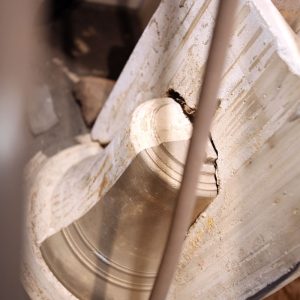
Origin of bells
By the PACCARD Bell Museum
Bells have been existing for thousands of years. Chinese were casting bells 2000 years before Christ. Egyptians and Phoenicians made and used numerous small bells. Bells were used in Greece and in Italy as well for a number of occasions: on market-places, during entertainments, to advise that public bath were opened, to name but a few of their use on daily basis.
Differently sized and shaped, bells are to be found in every continent among the greatest civilizations. In the oldest book of the world, the Bible, reference is made to “small golden bells” spread all over Priest Aaron dress (Exodus, chp 28, v33 to 35): “Bells ringing shall be heard when Aaron will enter the Sanctuary and face the Lord…”
During the early times of Christianism bells were the sign – symbol – of messianic calls and gatherings : the signum. According to ancient tradition, the use of bells in the churches and their sacralization was initiated by Saint Paulin (353-431), Bishop of Nole (Italy / Campany province). With Saint Barbe, Bishop Saint Paulin is the bell makers patron Saint.
By the end of the 7th century, those small sized bells were cast locally, next to churches and monasteries, by itinerant bell makers whose name was “Saintier”*. The oldest bell in France – the “cloche de Fontenaille” – was cast by one of those “Saintiers”, in 1202. During the 19th century the advent of the railway was the beginning of a new era for them as they built foundries and became sedentaries.
Before World War I, there were more than one hundred bell makers workshops in France. Nowadays there are only three, the PACCARD Bell Foundry being one of them, ranking number one in bell and carillons making.
*A “saintier” was a nomadic bell maker. Word finds it etymological origin in the word “seing” which long time ago defined the bell and was written “seintier” (bell maker). Then it became “Saintier” (the one drawing Saints).











